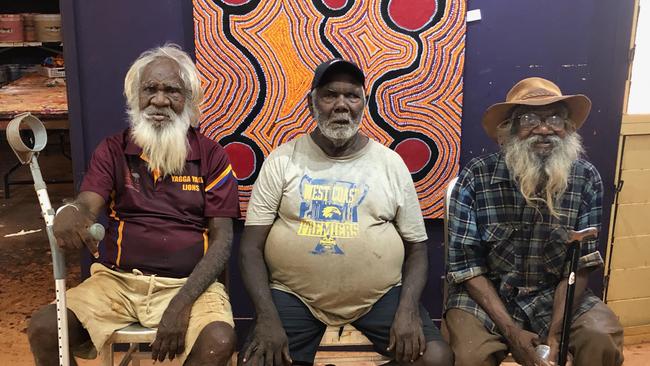Indigenous artists fear for their livelihood, and their lives, as art markets close
Aboriginal art centres face extreme financial hardship as key art markets cancelled amid fears for the health of elders.

Aboriginal art centres are facing extreme financial hardship as key art markets are cancelled and community centres close their doors to visiting tourists to prevent the spread of the coronavirus.
Hundreds of thousands of dollars in income will be lost to remote artists after this year’s National Indigenous Art Fair was cancelled, along with Western Australia’s biggest annual art fair, Revealed.
Some art centres may even be facing permanent closure if they cannot pay their bills or purchase art materials.
Amy Mukherjee, from Martumili Gallery in the WA mining town of Newman, says the art fair cancellations mean a loss of up to $150,000 in sales. “We put 200 artworks up online for sale yesterday because we’ve closed the gallery, but our Martu artists are incredibly vulnerable,” she said.
Mukherjee said 400 artists relied directly on art sales to feed their families, so Martumili is delivering art material packages via mail plane to remote communities along the Canning Stock Route.
The historic stock route has been closed in a bid to reduce the risk of virus exposure to elderly artists in the region.
Several art centres have told The Australian they fear they could lose “national living treasures”, or senior artists whose health is poor but whose cultural knowledge and art practice is irreplaceable. In the Tanami Desert community of Balgo, plans are being made to bus a number of senior artists with international reputations out of town to an outstation, where water, food provisions and a small clinic will be provided for their safety.
Among the community’s frail artists is Helicopter Tjungurrayi, a law man now in his 70s. As a sick child, he was rescued from the desert by helicopter and brought into Balgo, where he now lives. If the infection continues to spread, Tjungurrayi and his fellow artists Larry Gundora and Jimmy Tchooga could be transported to a nearby outstation, 50km from Balgo.
Stephanie Parkin, who chairs the Indigenous Art Code, said her member art centres were concerned about the future. “The reality is many indigenous artists have significant underlying health problems. If people get sick (from the virus), they get very sick. It is a long way to access any specialist medical attention, let alone the care they will need if they contract COVID-19,” she said.
“Travel to remote communities has been restricted to essential services, and rightly so. But this will impact staff getting in and out of communities, which will impact art production and sales.”
She urged people to continue purchasing work from remote artists online: “The ability for artists to maintain and transmit culture is important for all Australians.”
Almost all remote Kimberley outposts where artists live and work are facing a lack of medical supplies, testing equipment and spare houses in which to isolate potential virus patients.
Kimberley Aboriginal Medical Service chief executive Lorraine Anderson said it could take up to two weeks for any person living in Balgo to return a positive or negative swab, given there is only one flight out of the community a week and all tests must go to Perth. There are no pathology labs in the Kimberley or Pilbara.
Mel George, manager of Ernabella Arts, where 250 artists work in Central Australia, said she had been told by their peak body Desart that they could expect a massive drop in sales as a result of gallery closures on the eastern seaboard. “People are really worried about getting money to pay for food, and one artist feeds many family members,” she said.
Last year, Revealed earned $520,000 for 27 art centres, the highest ever market sales for the Fremantle indigenous art fair.
Federal Arts Minister Paul Fletcher held a roundtable with leaders from across the creative industries on Tuesday to discuss the pandemic’s impact on the arts sector. He said last week’s stimulus package could be accessed by arts organisations, including cashflow assistance of up to $25,000.



To join the conversation, please log in. Don't have an account? Register
Join the conversation, you are commenting as Logout